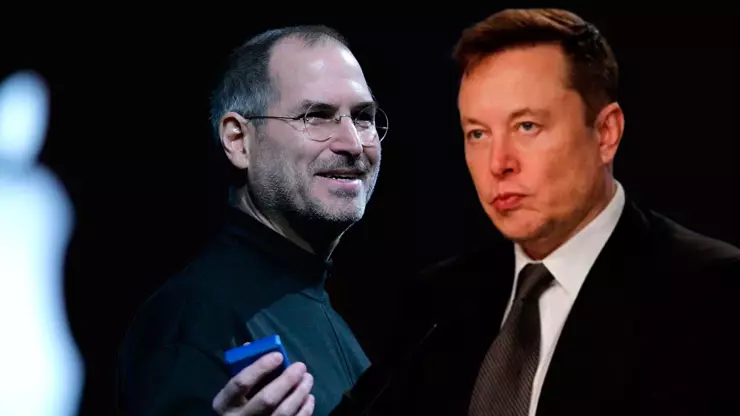
Did you know that only 10% of leaders exhibit mastery in all four key disciplines essential for success? These disciplines are pivotal in navigating today’s complex business landscape. By honing skills in strategic thinking, execution, people development, and self-awareness, leaders can elevate their effectiveness and drive remarkable results. In this post, we delve into these crucial disciplines that set exceptional leaders apart from the rest.
Table of Contents
Understanding Strategic Leadership
Core Concepts
Strategic fitness in leadership involves aligning goals with actions to achieve long-term success. It focuses on making decisions that drive the organization forward. The strategic approach ensures adaptability in a dynamic business environment.
Strategic fitness is crucial for setting direction as it provides a roadmap for the organization’s future. Leaders with strategic fitness can anticipate challenges and opportunities, guiding their teams effectively. It helps in prioritizing tasks and allocating resources efficiently.
Four disciplines stand out for strategically fit leaders: anticipating, challenging, interpreting, and deciding. These disciplines enable leaders to forecast trends, question assumptions, analyze data effectively, and make informed decisions promptly. Strategic fitness is essential for organizational success.
Studies on C-suite executives reveal that those excelling in strategic leadership outperform their peers. They demonstrate a clear vision, effective decision-making skills, and the ability to adapt to changing circumstances. Strategic fitness sets these leaders apart in today’s competitive business landscape.
Rich Horwath, a renowned expert in strategic thinking, emphasizes the importance of strategic clarity and alignment. His insights help leaders develop a strategic mindset and navigate complex challenges successfully.
Importance in Business
Strategic fitness directly impacts business success by ensuring sustainable growth and profitability. Organizations with strategically fit leaders are better equipped to capitalize on opportunities and mitigate risks effectively.

Competitive advantage stems from strategic fitness as it enables organizations to innovate, differentiate themselves, and respond swiftly to market changes. Leaders who prioritize strategic thinking position their companies for long-term success.
Leadership fitness involves inspiring teams, fostering innovation, and creating a positive work culture. Organizational fitness focuses on efficient processes, clear structures, and effective resource management. Communication fitness emphasizes clear messaging, active listening, and feedback mechanisms.
Companies like Apple, Amazon, and Google have reaped the benefits of strategic leadership through innovative products, market dominance, and sustained growth. Their success highlights the impact of strategic fitness on achieving organizational goals and staying ahead of competitors.
Strategic fitness plays a critical role in navigating challenges such as economic downturns, technological disruptions, and global crises. Leaders who embrace strategic thinking can proactively address issues, pivot their strategies, and lead their organizations through turbulent times.
The Four Key Disciplines
Visionary Thinking

Visionary thinking in leadership involves creating a compelling future by setting ambitious goals and inspiring teams to achieve them. It shapes the direction of an organization and guides strategic decisions. Visionary leaders like Elon Musk in technology and Oprah Winfrey in media have transformed industries through their forward-thinking approach. Their ability to envision the future has led to long-term success and sustainable growth.
Strategic fitness is greatly influenced by visionary thinking as it aligns all efforts towards a common goal. Having a clear vision helps leaders navigate uncertainties and challenges, making strategic planning more effective. For example, Steve Jobs’ vision for Apple revolutionized the tech industry and propelled the company to unprecedented success. Visionary leaders anticipate market trends, innovate proactively, and stay ahead of the competition.
Developing visionary thinking skills involves embracing creativity, fostering innovation, and thinking beyond current limitations. Leaders can cultivate this mindset by regularly brainstorming new ideas, seeking diverse perspectives, and staying informed about industry trends. By encouraging a culture of bold thinking and risk-taking, organizations can nurture visionary leaders who drive innovation and propel strategic growth.
Decision Making
Strategic decision-making is crucial for effective leadership as it determines the course of action that aligns with organizational goals. Leaders must weigh risks, analyze data, and consider long-term implications when making decisions. Decisive leaders like Winston Churchill during World War II exemplify the impact of strategic decision-making on shaping history and influencing outcomes.
Leadership fitness is directly impacted by decision-making skills as they determine the success or failure of strategic initiatives. Making effective decisions under pressure requires clarity, confidence, and a rational approach. Strategies such as conducting thorough research, seeking input from experts, and evaluating alternatives can help leaders make well-informed decisions even in challenging situations.
The correlation between decision-making and organizational success lies in the ability to seize opportunities, mitigate risks, and adapt to changing environments. Decisive leaders who make timely and informed decisions position their organizations for growth and sustainability. By prioritizing strategic alignment and considering both short-term gains and long-term consequences, leaders can navigate complexities and drive positive outcomes.
Execution Excellence
Execution excellence in leadership entails implementing strategies effectively to achieve desired outcomes. It involves translating vision into action, setting clear goals, mobilizing resources, and monitoring progress. Companies like Amazon known for their execution excellence demonstrate how operational efficiency drives growth, customer satisfaction, and market leadership.
Achieving strategic goals relies on seamless execution as it bridges the gap between planning and results. Leaders who prioritize execution focus on accountability, agility, and continuous improvement. By establishing clear responsibilities, tracking performance metrics, and adapting to changing circumstances, organizations can enhance their execution capabilities and deliver on strategic objectives.
Improving execution capabilities involves streamlining processes, leveraging technology, and fostering a culture of accountability within teams. Leaders can enhance execution excellence by setting realistic timelines, allocating resources efficiently, and promoting collaboration across departments. By emphasizing quality control measures, feedback mechanisms, and performance evaluations, organizations can optimize their execution strategies for better outcomes.
Adaptive Learning
Adaptive learning in leadership refers to continuously acquiring new knowledge and skills to respond to evolving challenges. It involves embracing change, seeking feedback, experimenting with new approaches, and adapting strategies based on feedback. Leaders who prioritize adaptive learning foster a culture of innovation, resilience, and agility within their organizations.
Continuous learning is essential for leaders to stay relevant in dynamic environments where disruptions are commonplace. Adaptive learning enables leaders to anticipate trends, identify opportunities for growth, and pivot strategies accordingly. Examples of adaptive learning leading to business innovation include companies like Google that encourage employees to explore new ideas, experiment with different solutions, and learn from failures.
Fostering a culture of learning within organizations requires promoting knowledge sharing, providing training opportunities, and recognizing individual development efforts. Leaders can cultivate adaptive learning by encouraging open communication channels, supporting professional development initiatives, and rewarding innovative thinking. By creating a safe space for experimentation and learning from mistakes, organizations can boost employee engagement, creativity, and overall performance.
Developing Strategic Leadership Skills
Enhancing Visionary Thinking
Visionary thinking is crucial for leaders aiming to navigate complex challenges and seize opportunities. Advanced techniques such as scenario planning and trend analysis can enhance visionary thinking. Understanding the relationship between visionary thinking and strategic fitness is key to long-term success. For instance, leaders who anticipate market shifts through visionary thinking are more likely to stay ahead of competitors.
Case studies of transformative leaders like Steve Jobs and Elon Musk highlight how visionary thinking drives innovation and industry disruption. By envisioning groundbreaking products like the iPhone or SpaceX rockets, these leaders reshaped their industries. To boost visionary thinking skills, leaders can engage in practical exercises like future trend analysis workshops or scenario-building sessions. These activities help leaders think beyond current constraints and envision bold futures.

Enhancing visionary thinking not only fuels creativity but also drives organizational change. By challenging status quo assumptions and embracing innovative ideas, leaders can inspire teams to pursue new directions. This shift in mindset fosters a culture of innovation and adaptability within the organization, positioning it for sustained success in dynamic markets.
Improving Decision Making
Effective decision-making is a cornerstone of strategic leadership, influencing outcomes and shaping organizational direction. Leaders can improve decision-making by utilizing tools like decision trees, SWOT analysis, and cost-benefit analysis. Enhanced decision-making directly impacts leadership fitness by enabling more informed and timely choices.
Real-life scenarios abound with examples where improved decision-making led to significant success stories. For instance, Netflix’s decision to invest in original content production transformed it into a streaming powerhouse. Decision-making frameworks used by strategic leaders provide structured approaches to evaluating options, mitigating risks, and maximizing opportunities.
Investing in decision-making improvement yields long-term benefits for organizations. By fostering a culture of data-driven decisions and empowering employees at all levels to make informed choices, companies can adapt swiftly to changing environments and capitalize on emerging trends.
Mastering Execution
Mastering execution involves translating strategic plans into tangible results through effective implementation and monitoring. Strategic leaders excel in execution by setting clear goals, allocating resources efficiently, and maintaining accountability throughout the process. Case studies of successful execution, such as Amazon’s customer-centric approach or Toyota’s lean manufacturing principles, demonstrate the impact of execution mastery on organizational fitness.
Expert tips for mastering execution include establishing clear communication channels, fostering collaboration among teams, and leveraging technology for streamlined processes. By aligning resources with strategic priorities and monitoring progress closely, leaders can ensure that initiatives are executed effectively.
Sustainable business growth hinges on mastering execution across all levels of the organization. When teams are aligned towards common objectives and equipped with the necessary skills and resources, they can deliver results consistently and adapt swiftly to market changes.
Cultivating Adaptive Learning
Cultivating adaptive learning within teams is essential for building resilience and agility in today’s fast-paced business landscape. Actionable steps like promoting knowledge sharing platforms, encouraging experimentation, and providing continuous feedback foster a culture of adaptive learning. The benefits of continuous learning include enhanced problem-solving abilities, increased innovation, and heightened employee engagement.
Best practices for promoting adaptive learning involve creating safe spaces for experimentation, celebrating failures as learning opportunities, and recognizing individuals who embrace continuous improvement. Training programs focused on developing critical thinking skills, creative problem-solving abilities, and emotional intelligence support adaptive learning initiatives within organizations.
Case Studies of Successful Leaders
Visionaries in Action
Visionaries like Steve Jobs and Elon Musk have revolutionized industries with their innovative ideas. Their ability to think outside the box and anticipate future trends sets them apart. These leaders possess a clear vision of where they want to take their organizations, inspiring others to follow suit. Through bold decision-making and calculated risks, visionaries navigate challenges and steer their companies towards continued success.
In the face of adversity, visionaries demonstrate resilience and unwavering determination. For instance, Jeff Bezos‘s relentless pursuit of customer-centricity at Amazon transformed the e-commerce landscape. Visionaries prioritize long-term goals over short-term gains, fostering a culture of innovation and forward thinking within their teams. By staying true to their vision, these leaders drive organizational growth and adaptability in dynamic markets.
The decision-making processes of visionaries are marked by strategic foresight and a deep understanding of market dynamics. They leverage data-driven insights and industry knowledge to make informed choices that propel their organizations forward. Visionary leaders embrace ambiguity and complexity, viewing challenges as opportunities for growth and transformation. Their ability to navigate uncertainty with confidence inspires trust and loyalty among stakeholders.
Decisive Leaders
Decisive leaders exhibit a keen sense of urgency and clarity in their actions. Indra Nooyi, former CEO of PepsiCo, is renowned for her decisive leadership style, steering the company through periods of change and innovation. Decisiveness enables leaders to make tough choices swiftly, ensuring agility and responsiveness in fast-paced environments. By prioritizing impact over perfection, decisive leaders drive results and instill a sense of purpose within their teams.
In critical situations, decisive leaders remain calm under pressure, making timely decisions that mitigate risks and capitalize on opportunities. Satya Nadella‘s strategic decision to shift Microsoft’s focus towards cloud computing exemplifies the power of decisive leadership in driving organizational transformation. Through effective communication and transparent decision-making processes, decisive leaders foster collaboration and alignment across diverse teams.
To cultivate decisiveness in decision-making, leaders can hone their judgment skills and embrace calculated risks. Setting clear priorities, establishing decision frameworks, and seeking diverse perspectives enhance the quality of decisions made under uncertainty. Decisive leaders empower their teams to act decisively by providing autonomy and support, fostering a culture of accountability and ownership within the organization.
Execution Experts
Execution experts like Sheryl Sandberg excel at translating strategic visions into tangible outcomes through meticulous planning and implementation. These leaders possess exceptional organizational skills and attention to detail, ensuring seamless execution of complex initiatives. By aligning resources effectively and monitoring progress rigorously, execution experts drive operational efficiency and performance excellence within their organizations.
The key to execution excellence lies in effective communication, stakeholder engagement, and resource allocation. Leaders who excel at execution prioritize accountability and transparency, fostering a culture of collaboration and continuous improvement. Tim Cook, CEO of Apple, is recognized for his operational prowess in delivering high-quality products on time while maintaining supply chain efficiency. Execution experts leverage technology and data analytics to optimize processes and streamline workflows for maximum impact.
Successful execution experts leverage project management tools, performance metrics, and feedback mechanisms to track progress and adjust strategies as needed. By fostering a culture of continuous learning and adaptability, these leaders ensure that their organizations remain agile and responsive to changing market conditions. Execution excellence is not just about achieving short-term goals but also about building sustainable capabilities for long-term growth.
Adaptive Innovators
Adaptive innovators such as Reed Hastings from Netflix embrace change as an opportunity for growth and renewal. These leaders pioneer disruptive technologies and business models that challenge traditional norms and redefine industry standards. Adaptive innovators continuously scan the environment for emerging trends, anticipating shifts in consumer preferences and market dynamics. By fostering a culture of experimentation and learning, they drive continuous innovation within their organizations.
The ability to pivot quickly in response to market changes is a hallmark of adaptive innovators. Brian Chesky‘s strategic decision to launch Airbnb Experiences showcased his adaptability in leveraging new revenue streams amidst the pandemic’s disruption. Adaptive innovators encourage risk-taking and creativity among their teams, empowering employees to explore new ideas and solutions without fear of failure.
To foster a culture of innovation and adaptability, leaders can promote cross-functional collaboration, diversity of thought, and a growth mindset within their organizations. By creating safe spaces for experimentation and knowledge sharing, adaptive innovators inspire creativity and resilience among their teams. Embracing feedback loops, rapid prototyping, and agile methodologies enables organizations to stay ahead in a rapidly changing market landscape.
Practical Steps to Enhance These Disciplines
Training and Education

Leaders who excel in strategic disciplines understand the significance of ongoing training and education. Continuous learning sharpens their skills and keeps them updated with effective strategies. Leadership development programs offer structured guidance for leaders to enhance their decision-making abilities.
Investing in continuous learning benefits teams by fostering a culture of growth and innovation. It equips them with the latest tools and techniques to tackle challenges effectively. Resources like online courses, workshops, and seminars provide accessible avenues for leaders to expand their knowledge base.
Leadership training and education contribute significantly to leadership fitness by improving adaptability and critical thinking. They enable leaders to navigate complex situations with confidence and make informed decisions promptly. By staying abreast of industry trends, leaders can lead their teams more effectively towards success.
Mentorship and Coaching
Mentorship and coaching play a pivotal role in shaping effective leaders. The guidance and support from experienced mentors help leaders navigate uncertainties and develop a strategic mindset. Mentorship fosters personal growth, enhances leadership capabilities, and accelerates professional development.
Successful leaders often attribute their growth to impactful mentorship experiences. These relationships provide valuable insights, feedback, and encouragement that propel leaders towards success. Finding a mentor who aligns with your goals and values is essential for maximizing growth opportunities.
Being a successful mentor or coach involves active listening, providing constructive feedback, and nurturing talent. By sharing experiences and knowledge, mentors empower mentees to overcome challenges and unlock their full potential. Mentorship programs create a supportive environment for leaders to thrive and excel in their roles.
Experience and Practice
Experience and practice are fundamental pillars of leadership development. Practical experience exposes leaders to real-world scenarios, enabling them to apply theoretical knowledge effectively. Leaders who actively seek opportunities to practice their skills demonstrate continuous growth and improvement.
Examples abound of leaders who honed their skills through consistent practice and hands-on experience. By embracing challenges, taking calculated risks, and learning from failures, leaders refine their decision-making abilities. Gaining exposure to diverse situations equips leaders with the resilience needed to navigate uncertainties confidently.
Deliberate practice involves setting specific goals, seeking feedback, and reflecting on performance to identify areas for improvement. Leaders can enhance their leadership competencies by engaging in simulations, role-playing exercises, and real-time decision-making scenarios. This intentional approach to practice fosters continuous learning and skill development.
Challenges in Strategic Leadership Development
Overcoming Obstacles
Leaders often face challenges in making strategic decisions due to various obstacles in their path. Common obstacles include uncertainty, resistance to change, and lack of alignment within the team. These hurdles can hinder progress and impact the success of strategic initiatives.
To overcome these obstacles, leaders can implement strategies such as fostering open communication, encouraging collaboration, and seeking diverse perspectives. By creating a supportive environment where team members feel valued and heard, leaders can navigate challenges more effectively and drive successful outcomes.
One inspiring story is that of Indra Nooyi, former CEO of PepsiCo, who successfully navigated challenges by embracing diversity and inclusion in decision-making. Her ability to overcome obstacles led to innovative product launches and sustainable business growth. Leaders can learn from her example by prioritizing inclusivity and adaptability in their leadership approach.
Building resilience and adaptability is crucial for leaders facing obstacles in strategic decision-making. By developing these qualities, leaders can respond effectively to unexpected challenges and pivot when necessary. Embracing change and uncertainty with a positive mindset can lead to personal growth and enhanced leadership capabilities.
Learning from Failure
Failure is an inevitable part of leadership, but it also presents valuable learning opportunities. Effective leaders understand the importance of learning from failure to drive continuous improvement and innovation within their organizations. Embracing failure as a stepping stone to success is key to fostering a culture of growth and development.
Leaders like Jeff Bezos, founder of Amazon, have leveraged failures as opportunities for growth. Bezos’s willingness to experiment and take calculated risks has led to groundbreaking innovations such as Amazon Web Services. His example highlights the transformative power of learning from failure and using setbacks as catalysts for progress.
Strategies for leveraging failure as a learning experience include conducting thorough post-mortems, soliciting feedback from team members, and encouraging experimentation. By embracing a growth mindset and viewing failures as valuable lessons rather than setbacks, leaders can cultivate a culture that promotes creativity and resilience.
Creating a culture that embraces failure requires leadership commitment to transparency, accountability, and continuous learning. By setting an example through their own actions and decisions, leaders can empower their teams to take risks, learn from mistakes, and innovate fearlessly. Embracing failure fosters a culture of experimentation that drives organizational agility and long-term success.
Measuring Success in Strategic Leadership
Performance Indicators
Identify key performance indicators (KPIs) to gauge leadership effectiveness. Metrics such as employee engagement, revenue growth, and customer satisfaction are crucial. Tracking these indicators helps leaders understand their impact on the organization.
Successful leaders often utilize KPIs like employee turnover rates, project completion times, and profit margins. These metrics provide tangible evidence of effective leadership strategies. Regularly monitoring KPIs allows leaders to make data-driven decisions for organizational success.
Leaders should set clear performance goals aligned with the organization’s objectives. By establishing measurable targets, they can track progress accurately. Regularly reviewing and adjusting these goals ensures continuous improvement in leadership effectiveness.
Feedback and Improvement
Feedback plays a vital role in leadership development by providing insights into strengths and areas for improvement. Constructive feedback fosters personal growth and enhances leadership skills. Leaders who actively seek feedback demonstrate a commitment to self-improvement.
Effective feedback strategies involve offering specific, actionable suggestions for improvement. Receiving feedback graciously and implementing changes based on it is essential for growth. Leaders who embrace feedback as a tool for development are more likely to succeed in their roles.
Feedback loops create a culture of continuous improvement within organizations. By regularly seeking and acting upon feedback, leaders can adapt to changing circumstances. This iterative process drives innovation and ensures sustained success in strategic leadership.
Future of Strategic Leadership
Evolving Disciplines
Leadership disciplines are constantly evolving to meet the demands of a dynamic business landscape. Adapting to change is crucial for strategic leaders to navigate uncertainty effectively. Embracing new strategies and approaches is essential for success in modern leadership roles.
As environments shift, leadership disciplines must also transform. Staying relevant in today’s fast-paced world requires leaders to be agile and open to new ideas. Successful leaders understand the importance of continuous learning and growth to remain effective in their roles.
In the realm of strategic leadership, emerging trends play a significant role in shaping the future. Innovative leaders are proactive in identifying and implementing new practices that align with the evolving needs of their organizations. By embracing change and innovation, leaders can position themselves for long-term success.
- Leaders who prioritize adaptability and innovation are more likely to thrive in today’s competitive landscape.
- Examples abound of successful leaders who have embraced new disciplines, such as agile leadership or design thinking.
- Staying current with evolving leadership practices is not just a choice but a necessity for those aiming for sustained success.
Emerging Trends
The landscape of strategic leadership is continually influenced by emerging trends that redefine traditional practices. Understanding these trends is crucial for leaders looking to stay ahead of the curve. By being aware of emerging trends, leaders can proactively shape their strategies to capitalize on new opportunities.
The impact of emerging trends on leadership strategies cannot be underestimated. Incorporating these trends into decision-making processes can lead to more innovative solutions and better outcomes for organizations. Leaders who are quick to adapt to changing trends are better positioned to drive growth and achieve strategic objectives.
Predicting future trends in leadership development is essential for preparing leaders for tomorrow’s challenges. Anticipating shifts in the industry allows leaders to develop the skills and competencies needed to excel in their roles. By staying informed and proactive, leaders can position themselves as trailblazers in their respective fields.
- Embracing emerging trends can provide organizations with a competitive edge in the market.
- Recommendations for staying ahead include investing in continuous learning and networking with industry experts.
- Remaining adaptable and open-minded is key to successfully navigating evolving leadership landscapes.
Final Remarks
You’ve delved into the world of strategic leadership, understanding its core disciplines, and the skills needed to excel. By exploring case studies and practical steps, you’ve gained insights into what makes a successful strategic leader. Overcoming challenges and measuring success are crucial aspects of this journey towards becoming an effective leader in today’s dynamic landscape. As you ponder the future of strategic leadership, remember that continuous development and adaptation are key.
Now, it’s time for you to take action. Apply the knowledge you’ve gained, reflect on your own leadership style, and start implementing strategies to enhance your strategic leadership skills. The path to becoming a top-tier strategic leader is within reach—embrace the challenges, learn from the successes of others, and forge your own path towards excellence.
Featured Image courtesy of DALL-E by ChatGPT
